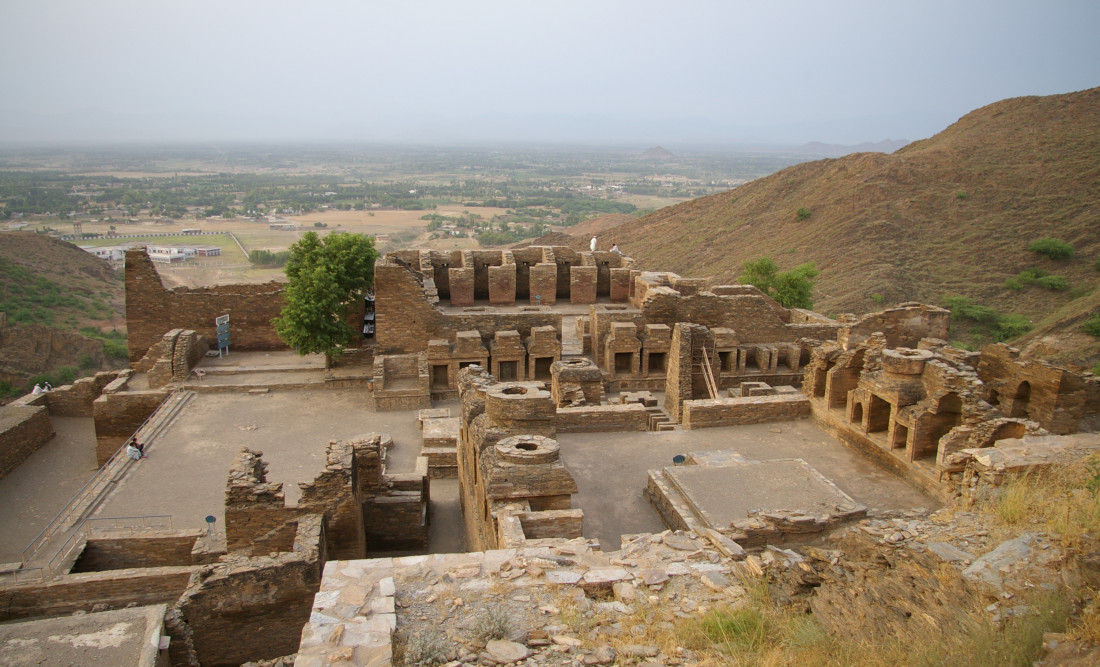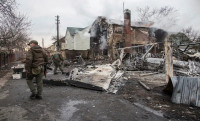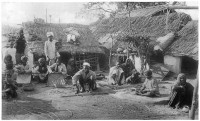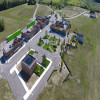Buddhist Ruins of Takht-i-Bahi - World Heritage Site

Buddhist Ruins of Takht-i-Bahi and Neighbouring City Remains at Sahr-i-Bahlol
The Buddhist monastic complex of Takht-i-Bahi (Throne of Origins) was founded in the early 1st century. Owing to its location on the crest of a high hill, it escaped successive invasions and is still exceptionally well preserved. Nearby are the ruins of Sahr-i-Bahlol, a small fortified city dating from the same period.
History
Archaeologists have divided the history of the complex into four periods, beginning in the 1st century BCE.
The monastic complex was likely founded in the early 1st century CE.It is proven by an inscriptions found bearing the name of Gondophares (20–46 CE).After Gondophares, the place fell under control of Kujula Kadphises,the first Kushan king. This first era continued until the 2nd century CE, and is associated with another Kushan king Kanishka, as well as early Parthian and later Kushan kings.The second construction period, which included the creation of the Stupa Court and assembly hall, took place during the 3rd and 4th centuries CE. A third construction period, associated with the later Kushan dynasty and the Kidara Kushana rulers, occurred during the 4th and 5th centuries.
The region was runover by Huns in middle of fifth century CE which ended the Kushan rule there. The Hun Toramana and then his son Mihirakula unleashed genocide of the populace of Gandhara and a wholesale destruction of Buddhist monasteries. The Buddhist monastery of Takht-i-Bahi seems to have been destroyed in the same period of carnage by Huns.
The complex nonetheless was in use until 7th century CE.
The first modern historical reference to these ruins was made in 1836 by the French Officer, the Buddhist remains are in a village named Mazdoorabad.Explorations and excavations on this site began in 1864.A significant number of objects from the site can be found in the British Museum.The site underwent a major restoration in the 1920s.
Outstanding Universal Value
Brief Synthesis
The Buddhist Ruins of Takht-i-Bahi and Neighbouring City Remains at Sahr-i-Bahlol are one of the most imposing relics of Buddhism in the Gandhara region of Pakistan. The inscribed property is composed of two distinct components both dating from the same era.
The Buddhist Ruins of Takhi-i-Bahi (Throne of Origins) are a monastic complex, founded in the early 1st century A.D., is spectacularly positioned on various hilltops ranging from 36.6 metres to 152.4 metres in height, typical for Buddhist sites. The complexes cover an area of around 33ha.
The Buddhist monastery was in continual use until the 7th century AD. It is composed of an assemblage of buildings and is the most complete Buddhist monastery in Pakistan. The buildings were constructed of stone in Gandhara patterns (diaper style) using local dressed and semi-dressed stone blocks set in a lime and mud mortar.
Today the ruins comprise a main stupa court, votive stupas court, a group of three stupas, the monastic quadrangle with meditation cells, conference hall, covered stepped passageways and other secular buildings.
The second component, the Neighbouring City Remains at Sahr-i-Bahlol, is located approximately 5 km away in a fertile plain. The Sahr-i-Bahlol ruins are the remnants of a small ancient fortified town of the Kushan period. The town is set on an elongated mound up to 9 metres high and surrounded by portions of the defensive walls in “diaper” style characteristic of the first two or three centuries A.D. The area covered is 9.7 hectares.
The Buddhist Ruins of Takht-i-Bahi and Neighbouring City Remains at Sahr-i-Bahlol in their setting, architectural form, design and construction techniques are most characteristic examples of the development of monastic and urban communities in the Gandharan region between the 1st to 7th century AD.
Integrity
Due to the location of on the Buddhist Ruins of Takht-i-Bahi on high hills, it escaped successive invasions and is exceptionally well preserved.
The boundaries of the ancient fortified city of Sahr-i-Bahlol are well defined with part of fortification walls still intact although in deteriorated condition. The site is increasingly threatened by encroachments, although the growth of settlements occurred already prior to 1911, when they were declared protected monument under the Ancient Monuments Preservation Act. Houses have been built directly on top of the ancient ruins and only remnants of the perimeter wall survive. The present boundaries of the property are considered inadequate due to the increasing urbanisation.
The inscribed property is also threatened by a number of other factors including uncontrolled vegetation resulting in one of the main causes of decay, inadequate drainage, and lack of security to prevent unauthorized animal and human encroachment and illegal digging. Pollution from local factories and vehicular traffic is also a serious threat adding to the deterioration of the site.
Authenticity
The Buddhist Ruins of Takht-i-Bahi has high authenticity of setting as it continues to occupy its original hilltop location. Authenticity of form and design has been preserved and the layout of the monastic complex and buildings are visible. Authenticity of materials as well as traditions and techniques of construction is retained in the stone construction in Gandhara patterns (diaper style). The stone sculptures were removed to the Peshawar Museum and the stone inscription of the Gondophares is preserved in the Lahore Museum.
The neighbouring ancient city remains at Sahr-i-Bahlol is endangered by urban expansion. The original sculptures from the site have been removed and are housed in the Peshawar Museum. The Management Plan notes the lack of documentation and the lack of a skilled workforce of artisans trained in the traditional techniques of diaper pattern.
Protection and management requirements
Both component parts of the Buddhist Ruins of Takht-i-Bahi and Neighbouring City Remains at Sahr-i-Bahlol were identified as protected monuments under the Ancient Preservation Act (1904) and subsequently under the Antiquity Act (1975) of the Federal Government of Pakistan. Proposals are under consideration to amend and strengthen the Antiquities Act. The Takht-i-Bahi ruins are owned by the federal Department of Archaeology, and the Sahr-i-Bahlol ruins are private property, owned by the local Khans.The government has established a Sub Regional Office with appropriate professional, technical and watch ward staff and have allocated financial resources through an annual budget. As well a public sector development programme is provided to maintain and preserve the site by regular and rigorous repair and conservation programmes. Management responsibilities lie with the Provincial Department of Archaeology (Province of Khyber Pakhtunkhwa) situated in Peshawar. A Master Plan for the Buddhist Ruins of Takht-i-Bahi and Neighbouring City Remains at Sahr-i-Bahlol was prepared in 2011. Intended as a working document for site custodians, it is also designed to provide a detailed holistic framework for the conservation of the inscribed property and sets out principles for management by means of a prioritized plan of action covering a number of areas of concern from site conservation to visitor management.The threat of urbanization identified above, indicates that the boundaries of the property are inadequate. As a result a revision of the property boundaries is being seriously considered along with the intention to acquire the land around the site and to create a larger buffer zone. In an effort to control urbanization, the entire mountain area of 445 hectares was recently declared the “Archaeological Reserve” by the provincial government of Khyber Pakhtunkhwa. There remains a need for more adequate documentation of the remains and for enhanced capacity building for craftsmen in traditional building techniques.

Manoj Bhiva
Manoj Bhiva is a dedicated writer who loves to write on any subject. Manoj Bhiva maintains a similar hold on politics, entertainment, health, abroad articles. Manoj Bhiva has total experience of 3 years in web and Social. Manoj Bhiva works as a writer in Wordict Post.
Russian Rocket 'Totally Destroys' Dorm, Unknown Amount Dead: Zelensky
Posted on 18th Aug 2022









